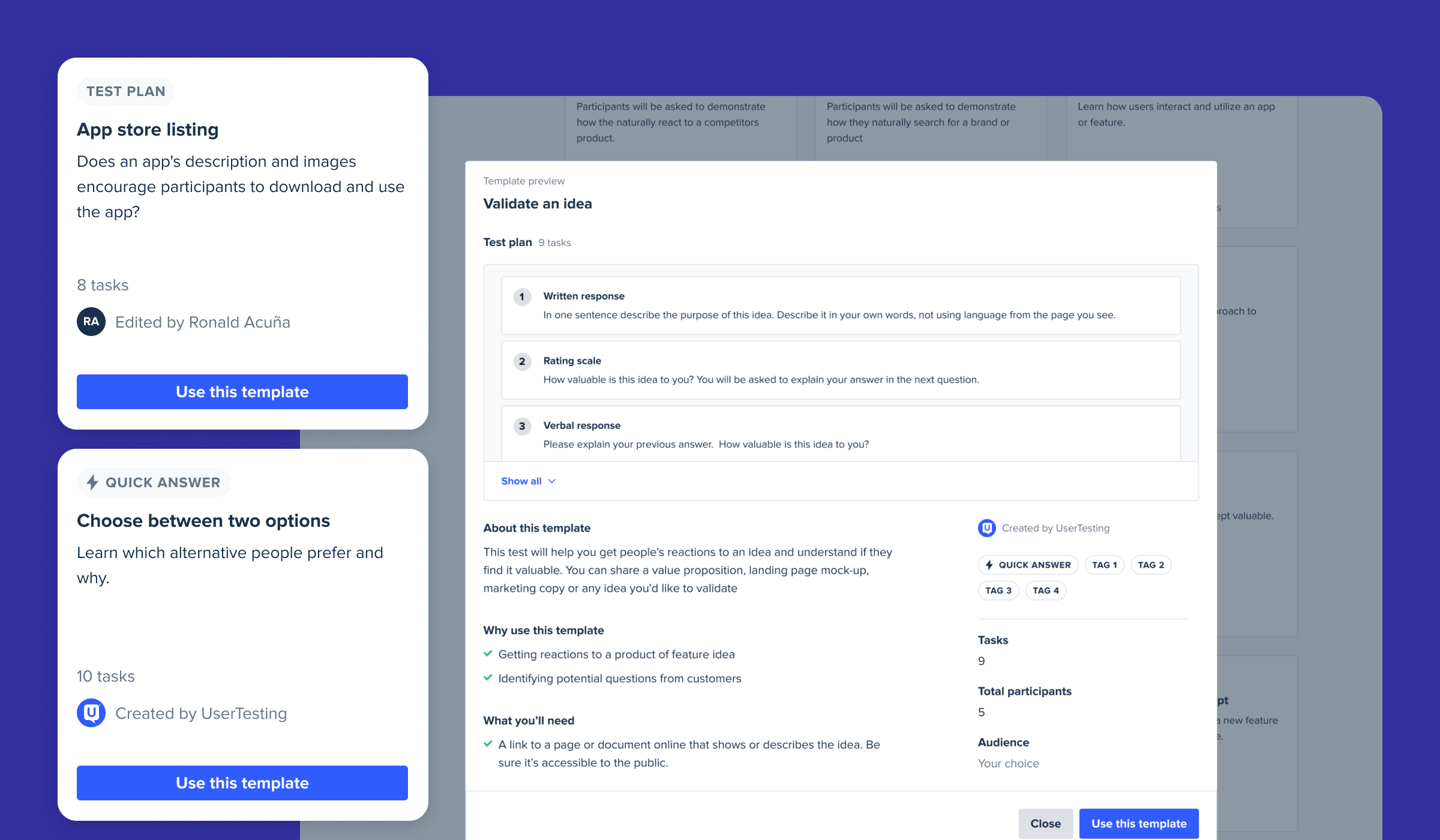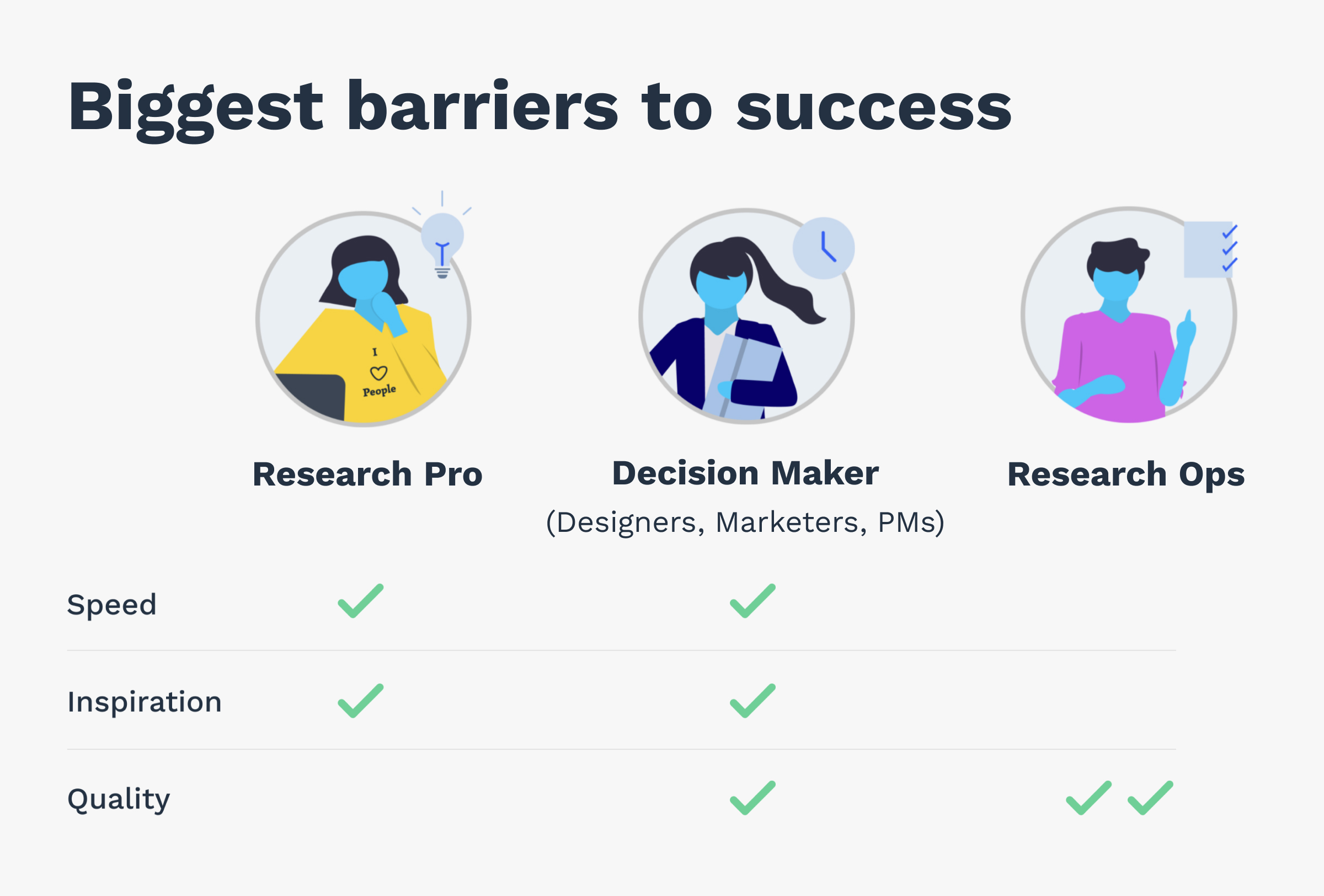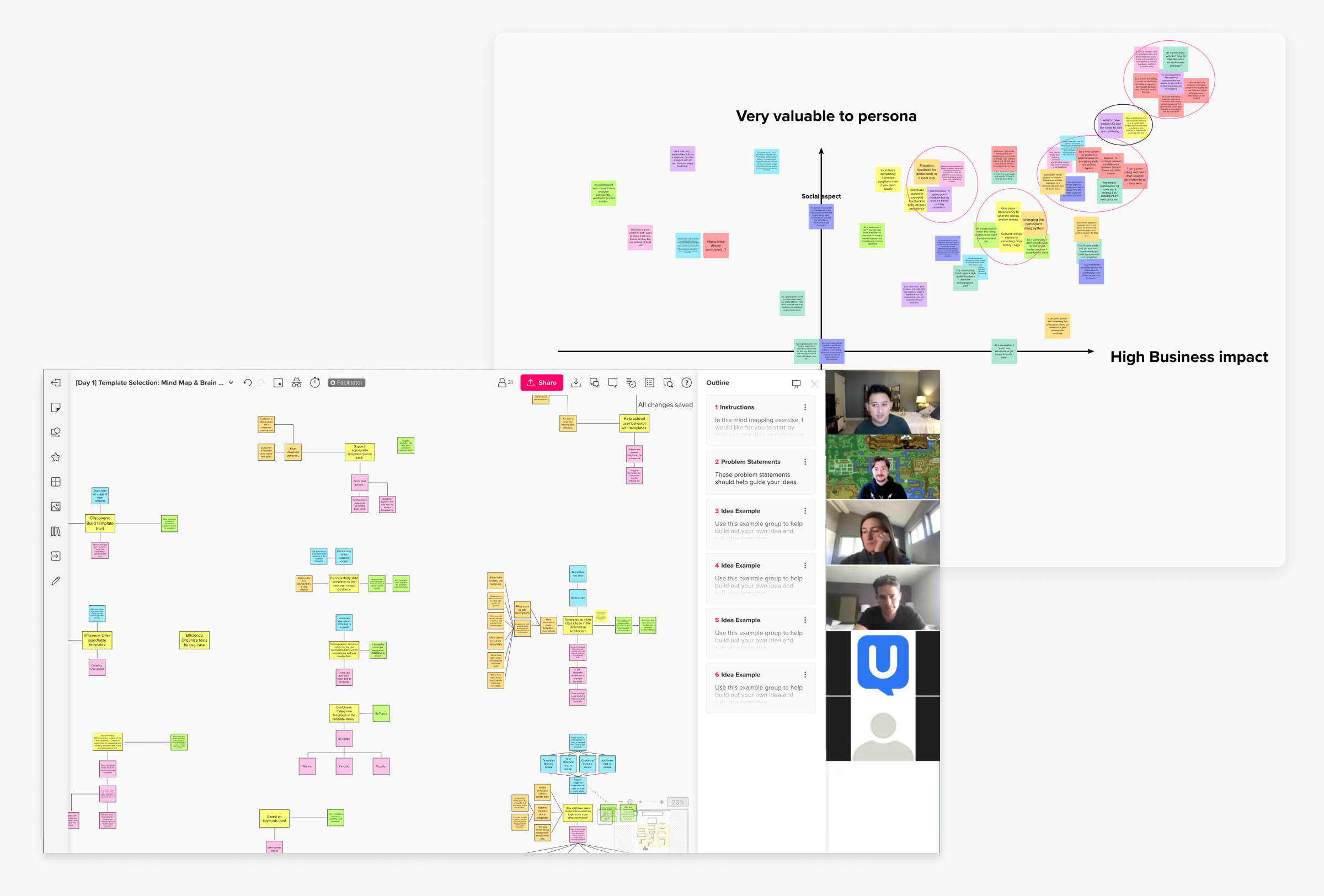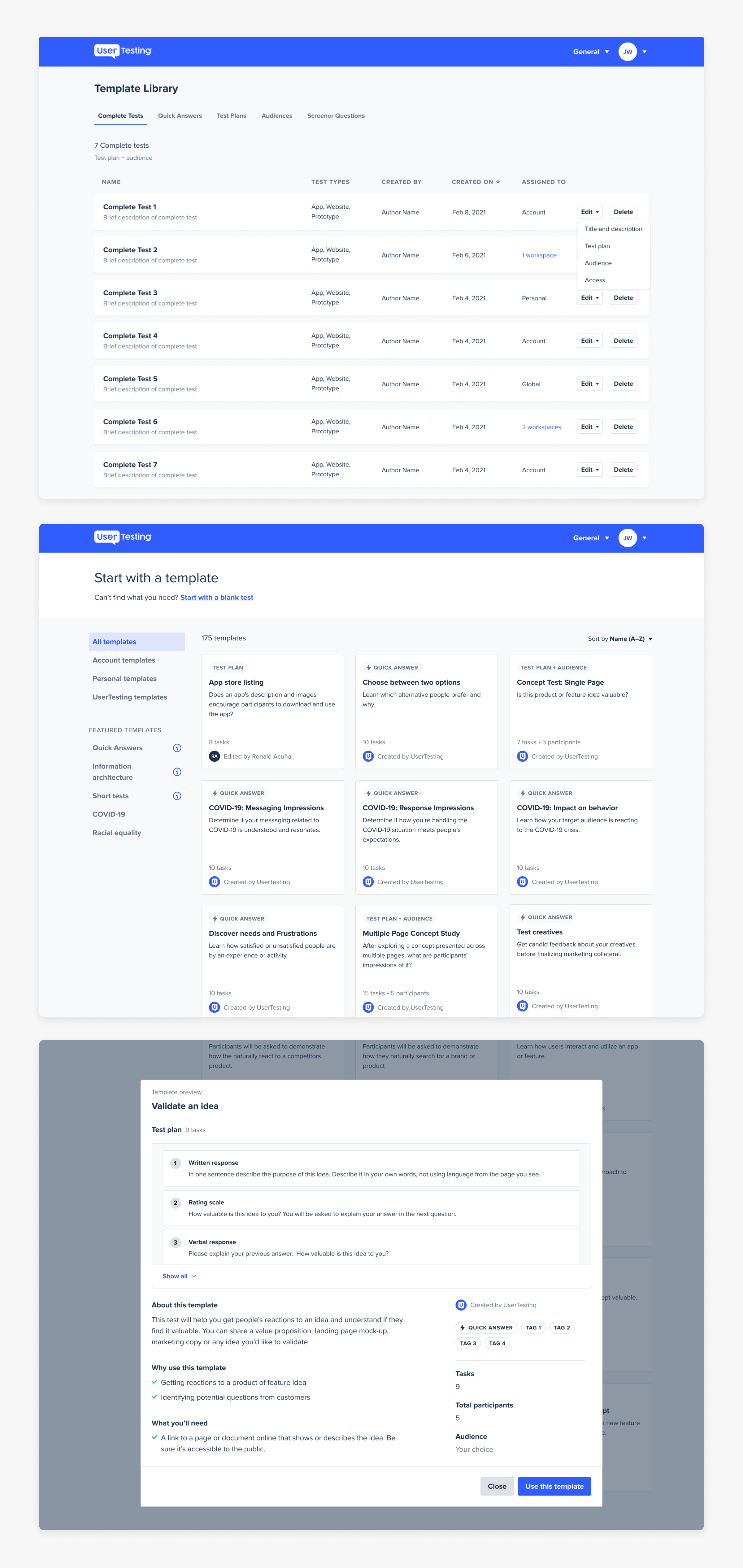
Jason Guevara
Last updated November 2022

Jason Guevara
Last updated November 2022

UserTesting makes it easy to run remote usability tests and synthesize useful insights from results. However, the different job roles that look to run tests vary and those less familiar with research best practices often need help in creating a test. We built and improved version of the existing test template library to help customers run tests more quickly and with better quality.
Responsible for collaborating on research, product strategy, and end-to-end design for the template feature.
Lead designer with input from the wider design team, 1 Content Designer, 1 Product Manager, 1 Researcher, and 4 Engineers.
🔮 This is a simplified overview. To learn more,
get in touch →
A collection of templates already existed for UserTesting customers at the start of our efforts. They served as different solutions depending on one's role.
One of the most common challenges for anyone who isn't a full-fledged researcher is knowing how to run a test the right way and without bias. For those who are user researchers, their biggest challenges are having enough time to run tests they need. Templates serve to give researchers a foundation to work off of in order to expedite their process.
Interestingly enough, less than 2% of all tests are launched using templates. This told us templates are neither valuable enough nor are they visible enough to warrant usage by any of our customer personas. This left us with a real opportunity to create impact that would help our customers run tests more quickly and effectively.

The biggest challenges for key customers.
In order to better understand the customer mindset, we conducted some interviews to uncover the details behind why people aren't using templates. We identified three overarching themes:
Low awareness, poor understanding of a template's intent and output, poor organization and finability.
Templates rarely meet user needs, some aren't editable, low comprehension on how to tailor a test's output.
Not enough templates to cover use cases, difficult to manage, no content team for support of new templates.
We couldn't address all of these issues up front. Once I ran a remote ideation with the team, we had to prioritize the ideas taking into consideration value to the customr personas against business impact. After narrowing down the list, we fine tuned it a bit more by plotting customer value against feasibility. Here's where we landed:
Helps to address issues with 💡, ✍️, 🌱
Helps to address issues with ✍️, 🌱
With both a preview and better template management, the most glaring of customer problems would be resolved. As I iterated, I got customer validation along the themes of improving understanding, customization and scalability.

Ideation and prioritization processes.
Over the first 30 days, we were tracking any increase in tests launched, views on the template gallery, repeat template visitors in the same month, and improved CSAT score. The updates to the template experience led to a 3% increase in tests launched. Additionally, views on the template gallery increased by 24% which we believe will lead to continued usage. CSAT scores were flat, however.
Milestone 2 for the template experience aimed at standing up a template content team in order to diversify the templates UserTesting offers. The core of the CSAT problem is that the use cases covered by existing templates aren't nearly broad enough.

Management and consumption experiences for templates.